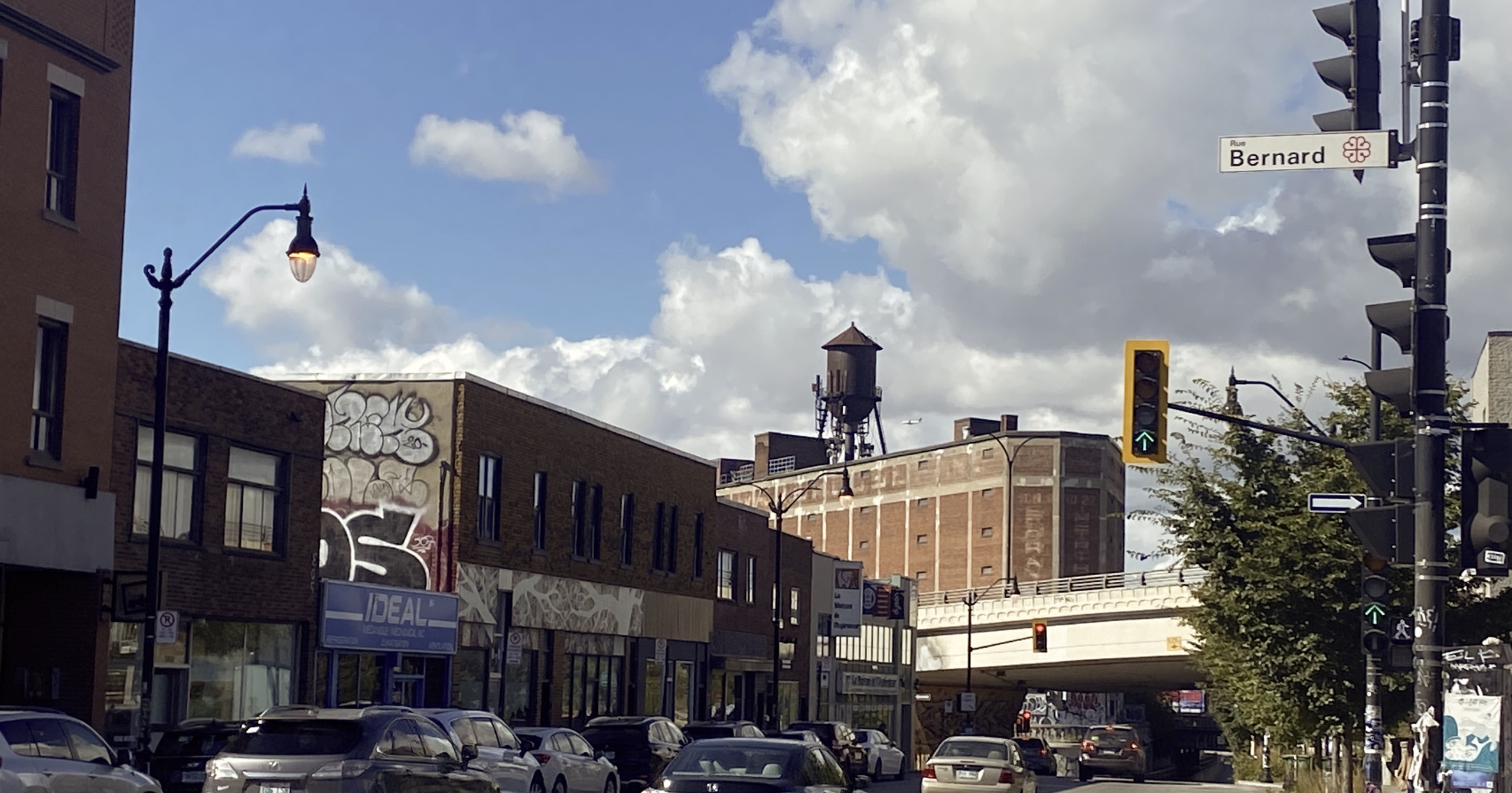The Mile End is a small enclave in the north-central region of Montreal, Canada, established in the mid-19th century and incorporated into the city proper as of 1910. The neighbourhood underwent rapid industrialization in the first half of the 20th century, becoming by the 1960s a central node in Montreal’s and Canada’s textile and clothing industries. Starting in the mid-1970s, trade liberalization and offshoring of production led to the decline of these industries, causing the loss of thousands of jobs and the hollowing out of the neighbourhood’s economy. In the decades since, the area has seen an influx of artists and musicians attracted by low rent, affordable studio space, and an ambiance of marginality and scrappy creativity: by the early 2000s it had gained international renown as a hub of iconoclastic and experimental music and art, home to numerous music groups, art studios, record labels, music festivals, coffee shops, and so on. In a now-familiar story, this economic “revitalization” has brought with it a dramatic increase in rents and forced out many long-time residents and small businesses.
If the study of deindustrialization seeks to illustrate the longer-run effects of capital movement into and out of particular industries in particular places, we cannot do without an analysis of gentrification as a related and indeed corollary phenomenon. Decimating working-class communities and cultures, capital flight from a given geographical space also often leaves a disinvested and derelict built environment in its wake, laying the groundwork for future waves of reinvestment and attendant gentrification. This is a key feature of the “half-life of deindustrialization,” having much to do with the shift in dominant accumulation strategies since the mid-1970s away from manufacturing and industrial production towards globalized financialization, within which housing has become a key site for profit-generating speculation.
It’s crucial that our research links a global perspective on the capitalist world economy to its localized effects, including what comes after industry has vacated a given region. Scholars of deindustrialization know that uneven development, at a variety of spatial scales, has always been a hallmark of the growth of global capitalism, and it’s also key to understanding gentrification in once-industrialized places. The phenomenon is at the heart of the eminent gentrification critic Neil Smith’s influential rent gap thesis – according to which gentrification can be expected to ensue when there is a perceived disparity between a property’s current ground rent and that which could obtain were the property put to its “highest and best use.” This disparity is predicated on cycles of investment and disinvestment – as is the process of deindustrialization.
In my own work I seek to interrogate both the mobility of capital and its boundedness to place, and to explore how culture facilitates its reinvestment in deindustrialized spaces. Much recent analysis – both within academia and outside of it – has shown that art, music, and other forms of cultural production have a key role to play in the processes of neighbourhood redevelopment described above, at once mediating and being coopted into the inertia of reinvestment in the built environment. In her work on New York City in the closing decades of the 20th century, Sharon Zukin describes this process as a corollary of the transformation of cities from spaces of production to spaces of consumption. This is on clear display in the Mile End, the subject of my case-study research.
One aspect of my research looks at uses of imagery and symbolism evoking industrialization and deindustrialization, which have been mobilized as part of this wave of cultural production and the development of a new identity for the neighbourhood. Such imagery signals nostalgia for an ostensibly lost era of industrial production and the ersatz authenticity it represents, effecting an aestheticization of the “post-industrial” while typically having little to say about the actual workers who made such development possible in the first place.
The water tower atop the warehouse at 1 Van Horne avenue is a case in point. A clear reference to the neighbourhood’s industrial past, the water tower has loomed over the Mile End for more than a century, and since the late 1990s has become an avatar of the neighbourhood’s new cultural cache. My research traces the symbolic life of the water tower through album covers, t-shirts, postcards, promotional posters and various other forms of memorabilia. I aim to highlight the thin line between neighbourhood identity and neighbourhood branding in the context of contemporary capitalism, and the thorny question of what constitutes “community” in the absence of a collective subjectivity based on labour.
The neighbourhood’s ongoing gentrification is widely acknowledged and frequently remarked upon in local media. As of last year, in fact, the warehouse at 1 Van Horne has been targeted for redevelopment into a luxury hotel and office spaces. The announcement was met with outcry from many of the neighbourhood’s longer-term residents, some pointing to the increasing dearth of affordable housing, others to the threat the development would pose to the “character” of the neighbourhood. Less common in these discussions, however, are analyses of precisely how we got here, and the roles of various actors – artists, business owners, home buyers – in facilitating that trajectory. This is what I seek to illuminate in my work.
Both deindustrialization and gentrification force the displacement of working-class and lower-income residents from their workplaces and their communities, and I hope to contribute to our collective work in DePOT by strengthening connections between these two fields of analysis.





